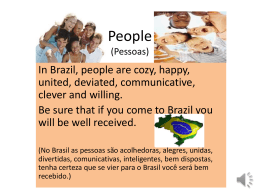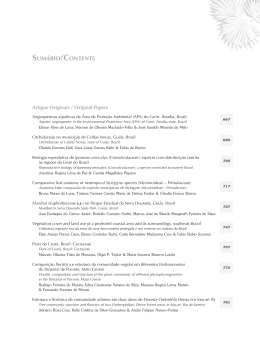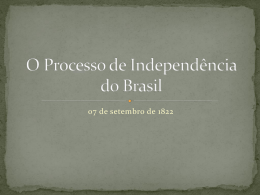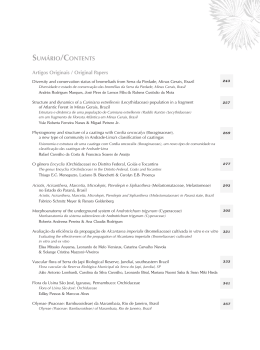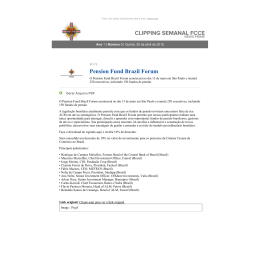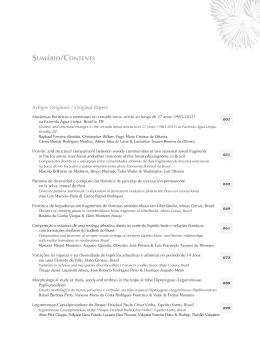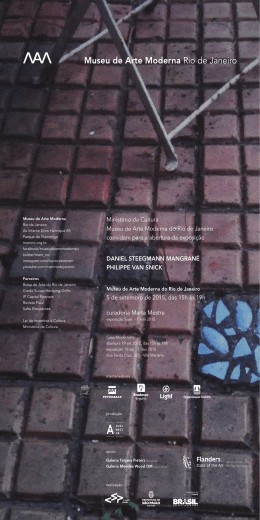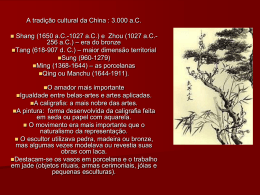FLÁVIO CERQUEIRA Flávio Cerqueira, 1983 Nasceu em São Paulo, Brasil Vive e trabalha em São Paulo, Brasil O artista trabalha com o processo tradicional da escultura em bronze. No trabalho de Flávio Cerqueira, a figura humana protagoniza situações cotidianas universais em momentos de introspecção, reflexão, concentração, materiais do cotidiano como livros, escadas, troncos de árvore, rampas, cimento, são usados em seus trabalhos em uma tentativa de criar relações entre o mundo e o espectador. Em 2005 concluiu o curso de educação artística na Faculdade Paulista de Artes, São Paulo e desde 2009. Realizou inúmeras exposições coletivas no Brasil e no exterior dentre as quais se destacam Re-Significations, Museu Bardini, Florença, Itália (2015), Há escolas que são gaiolas e há escolas que são asas, Museu de Arte do Rio de Janeiro (2015), Arte entre dois mundos, Museu Afro Brasil (2014), Situações Brasília – Prêmio de Arte Contemporânea do Distrito Federal, no Museu Nacional da República em Brasília/DF (2012), Nova Escultura Brasileira, no Centro Cultural da Caixa no Rio de Janeiro (2011), 16ª Bienal de Cerveira, Portugal, Boîte invaliden, invaliden 1 Galerie, Berlin, Alemanha (2011), Summer Calling, Galeria 3+1 Arte Contemporânea, Lisboa, Portugal (2011). Flávio Cerqueira, 1983 Born in São Paulo, Brazil Lives and works in São Paulo, Brazil The artist works with the traditional process of sculpture in bronze. Flavio cerqueira’s work has the human figure in its center, depicting ordinary universal situations of men in moments of introspection, reflection and concentration. objects of the daily life, such as books, stairs, tree branches, ramps and cement are used in his works in order to create links between the world and the viewer. In 2005, Flavio cerqueira finished the course artistic education at the Faculdade Paulista de Artes (Paulista University of Arts), São Paulo, Has participated in a number of group shows in Brazil and abroad, amongst which ReSignifications. Museu Bardini, Florença, Itália (2015), Há escolas que são gaiolas e há escolas que são asas, Museu de Arte do Rio de Janeiro (2015), Arte entre dois mundos, Museu Afro Brasil, São Paulo (2014), Situações Brasília, Museu Nacional da República, Brasília (2012), Nova Escultura Brasileira, Centro Cultural da Caixa, Rio de Janeiro (2011), 16ª Bienal de Cerveira, Portugal (2011), Boîte Invaliden, Invaliden 1 Galerie, Berlin (2011), Summer Calling, Galeria 3+1 Arte Contemporânea, Lisbon (2011). EXPOSIÇÕES INDIVIDUAIS / SOLO EXHIBITIONS Eu vi o mundo e ele começa dentro de mim [I saw the world, and it begins within me], 2015 Vista geral [general view] Paço das Artes, São Paulo, Brasil Eu vi o mundo e ele começa dentro de mim [I saw the world, and it begins within me], 2015 Paço das Artes, São Paulo, Brasil Eu vi o mundo e ele começa dentro de mim [I saw the world, and it begins within me], 2015 Vista geral [general view] Paço das Artes, São Paulo, Brasil FLÁVIO CERQUEIRA EU VI O MUNDO E ELE COMEÇA DENTRO DE MIM Walt Whitman Nas mãos de figuras tão dessemelhantes entre elas, e separadas por latitudes e cronologias as mais diversas, como Nicola Salvi, Gian Lorenzo Bernini, Niki de Saint Phalle, e I. M. Pei, esse suporte artístico, que nada mais é do que uma construção com uma ou mais bicas que jorram água sobre uma bacia, deu origem a obras das mais interessantes e potentes não só por suas realizações escultóricas, mas também pelo elo que conecta essas realizações à metáfora quase banal, e portanto inextinguível, da água potável e sua importância para a vida. Ao longo de sua recente trajetória artística, Flávio Cerqueira vem se engajando com material e técnica dos mais antigos e tradicionais: o bronze e a cera perdida. É um método que existe desde a descoberta dessa liga metálica em algum momento no século III a.C.. O peso de uma tradição de cinco milênios pode ser visto por jovens artistas com um misto de receio, inquietação e desconfiança ou até mesmo desprezo, pois é certo que trilhar os passos de Praxíteles, Donatello, Cellini e Rodin não é tarefa nada fácil e que quem o faz o faz por sua conta e risco. Isso não acontece com Flavio Cerqueira, que combate a técnica e suas possiblidades expressivas com candura e simplicidade notáveis, pacientemente dedicando-se a ela com um olhar desembaraçado pela força da tradição. Dessa forma, ele inadvertidamente dá continuidade a essa mesma tradição, repotencializando-a com uma linguagem e máximas visuais contemporâneas, em nada arcaizantes ou saudosistas. Referenciando claramente Cícero Dias e seu painel mais ambicioso Eu vi o mundo... Ele começava no Recife, Flavio Cerqueira nos coloca diante de uma figura, possível autorretrato subjetivo ou talvez um everyman com o qual todos podem se identificar, que rega a própria cabeça. Essa cabeça, centro da subjetividade e da autoimagem de todos nós, se apresenta aberta, com a tampa do crânio retirada pela imaginação do artista. Dentro da cavidade onde deveríamos encontrar um cérebro e seus nervos encontramos plantas regadas pela água que jorra sobre ela graças à ação dessa mesma figura. Regando a própria subjetividade, ela sustenta sobre si suas próprias folhas e, por consequência, de todos nós. O artista, aqui, interioriza a gênese de todo e qualquer Jardim do Éden, desse paraíso perdido por definição, não mais localizado, como no caso de Cícero Dias, em um ponto geográfico, mas agora dentro do sujeito que se rega a si mesmo, e reflete nossa própria consciência no espelho d’água que se encontra sob ele. These are really the thoughts of all men in all ages and lands, they are not original with me; If they are not yours as much as mine they are nothing, or next to nothing; If they are not the riddle and the untying of the riddle they are nothing; If they are not just as close as they are distant they are nothing; This is the grass that grows wherever the land is and the water is; This is the common air that bathes the globe. Se, num primeiro momento, o interesse de Cerqueira em suas esculturas era pelo instante que antecede uma dada ação, retratando os instantes anteriores a sua consumação pela figura, ele agora se interessa em registrar a própria ação, inserindo em suas esculturas em bronze – o material da fixação da ação na arte por excelência –, o próprio movimento. Se ele antes contava a pré-história da ação, ele agora a congela, inserindo o tempo como elemento constitutivo de suas obras, dessa forma expandindo as possibilidades narrativas e poéticas de seus adágios tridimensionais. Na presente obra, intitulada Eu vi o mundo e ele começa dentro de mim, Cerqueira se vale da tradição da fonte ornamental e de todo seu vocabulário de formas e possibilidades. Esse estranho híbrido de arquitetura, escultura e abastecimento de água, é utilizado por artistas desde o tempo dos sumérios, sem jamais perder sua atualidade e a possibilidade de agregar novos significados. Cerqueira é um artista que produz esculturas que são o resultado de uma sensibilidade artística ao mesmo tempo marrenta e delicada, direta e interiorizada, bem-humorada e agridoce. Suas obras tingem-se quase sempre de um leve verniz de melancolia. Parece correto dizer que ele simplesmente intenta apresentar um espelho ao mundo que começa dentro dele mesmo, reproduzindo-o tal qual, infiltrado, de forma franca e sincera, tomando dores e alegrias com o mesmo grau de desassombro, e utilizando a arte e seus artifícios como observatório privilegiado para a destilação de suas experiências. Experiências essas que são o “ar comum que banha o globo”, e que nós espectadores somos convidados a partilhar, e por que não, completar. Giancarlo Hannud FLÁVIO CERQUEIRA I SAW THE WORLD, AND IT BEGINS WITHIN ME These are really the thoughts of all men in all ages and lands, they are not original with me; If they are not yours as much as mine they are nothing, or next to nothing; If they are not the riddle and the untying of the riddle they are nothing; If they are not just as close as they are distant they are nothing; This is the grass that grows wherever the land is and the water is; This is the common air that bathes the globe. Walt Whitman Throughout his recent trajectory, Flavio Cerqueira has engaged himself with one of the oldest and most traditional of artistic techniques: bronze and lost wax. It is a method that has existed since the discovery of this metallic alloy sometime in the third millennium BC. The weight of a five-millennia tradition can be seen by young artists with a mixture of fear, unease and suspicion, or perhaps even contempt, for it is certain that to tread in the footsteps of Praxiteles, Donatello, Cellini and Rodin is not an easy task and that whoever does so does it at their own risk. Not so with Flavio Cerqueira, who battles with this technique and its expressive possibilities with remarkable candor and simplicity, patiently devoting himself to it with an outlook unhindered by the force of tradition. Thus, he inadvertently continues that same tradition, giving it new strength, without any trace of the archaic or nostalgic. If at first Cerqueira’s interest resided in the moment that precedes a given action, he is now interested in registering action itself by including movement in his work. If before he recorded the prehistory of action, he now freezes it inserting time as a constituting element of his works, thus expanding the narrative and poetic possibilities of his three-dimensional epigrams. In the present work, entitled I saw the world, and it begins within me, Cerqueira makes use of the tradition of the ornamental fountain and its vocabulary of shapes and possibilities. This strange hybrid of architecture, sculpture and water supply has been used by artists since the time of the Sumerians, without ever losing its relevance and the possibility of adding new meanings to it. In the hands of figures as diverse as Nicola Salvi, Gian Lorenzo Bernini, Niki de Saint Phalle, and IM Pei, and separated by the most diverse latitudes and chronologies, this artistic support, which is nothing more than a construction with one or more fountains spouting water over a bowl, has given birth to very interesting and powerful works not only for their sculptural achievements, but also for the link that connects these achievements to the almost banal metaphor, and thus unquenchable, of drinking water and its importance to life. Clearly referencing Cicero Dias and his most ambitious panel I saw the world ... It began in Recife, Flavio Cerqueira puts us here in front of a figure, possibly a subjective self-portrait or an Everyman with which everyone can identify, who waters his own head. This head, center of subjectivity and self-image of us all, appears open, with the skull cap removed by the artist’s imagination. Inside the cavity where we should find a brain and its nerves we see plants watered with the liquid that gushes on to it thanks to the action of the figure. Showering its own subjectivity, it sustains itself on its own leaves and therefore all of us. The artist here internalizes the genesis of any Garden of Eden, this paradise lost by definition, no longer localized, as in the case of Cicero Dias, in a geographical point, but now within the subject that is watering himself, and which reflects our own conscience in the mirror of water that is under it. Cerqueira’s sculptures are the result of an artistic sensibility at once aggressive and delicate, direct and internalized, humorous and bittersweet. His works exist beneath a thin veil of melancholy. It seems fair to say that his intention is simply to present a mirror to the world that begins within himself, reproducing it as such, unfiltered, in an open and sincere manner, taking pains and joys with the same degree of honesty and using art and its devices as a privileged observatory for the distillation of his experiences. These experiences are the “common air that bathes the globe,” and that we, its spectators, are invited to share and (why not?) complete. Giancarlo Hannud Ensimesmados [Closed in on themselves], 2013 Vista geral [general view], primeiro andar [first floor] Casa Triângulo, São Paulo, Brazil Ensimesmados [Closed in on themselves], 2013 Vista geral [general view], primeiro andar [first floor] Casa Triângulo, São Paulo, Brazil Ensimesmados [Closed in on themselves], 2013 Vista geral [general view], segundo andar [second floor] Casa Triângulo, São Paulo, Brazil Ensimesmados [Closed in on themselves], 2013 Vista geral [general view], segundo andar [second floor] Casa Triângulo, São Paulo, Brazil FLÁVIO CERQUEIRA ENSIMESMADOS FLÁVIO CERQUEIRA CLOSED IN ON THEMSELVES Nesta sua primeira individual em uma galeria de São Paulo, Flávio Cerqueira expõe o desenvolvimento de sua obra ao passo que seus personagens tomam consciência de um vasto horizonte, que se agiganta bem diante de seus olhos, incitando-os a extrapolar a concha que outrora os prendia em um universo restrito e experimentar tudo aquilo que antes lhes parecia impossível. Cerqueira nos convida a acompanhar esta busca por algo mais – empreitada comum a todos nós – e se, ao longo do percurso, nos esquecermos por um instante da pretensa segurança emprestada pelo chão em que firmamos os pés, e nos permitirmos voltar à infância arriscarmos uma olhada para o céu, erguendo nossa vista, teremos uma grata surpresa. In his first solo show in a gallery in São Paulo, Flávio Cerqueira is showing the development of his work as his characters become aware of a vast horizon that is growing gigantically before their very eyes, impelling them to range beyond the shell that previously held them within a restricted universe and to experience everything that once seemed impossible to them. Cerqueira invites us to come along on this search for something more – an undertaking common to all of us – and if, along the way, we forget for an instant the presumed security lent by the ground we stand on and allow ourselves to go back to our childhood, raise our eyes, and dare to take a look at the sky, we will have a welcome surprise. O artista povoa o espaço expositivo com entes que adotam posturas reflexivas, cuja grandiosidade não se traduz em monumentalidade, mas em obras que podem ser apreendidas sem um distanciamento necessário, sugerindo certa intimidade. A forma tradicional da escultura figurativa é o meio escolhido pelo artista para tratar de temas recorrentes na contemporaneidade, como a solidão, frustrações, expectativas e esperança. A rudeza do bronze é dissimulada pela delicada pintura branca que Flavio confere às suas primeiras obras, uma falsa fragilidade condizente com o estado de espírito que delas emana. Na sequência, o artista deixa cair gradualmente este véu de porcelana injetando força em suas figuras, livrando-as paulatinamente do exílio, trazendo para o convívio elementos do mundo exterior, como uma escada ou galhos. The artist peoples the exhibition space with beings who adopt reflexive postures, whose grandiosity is not conveyed by monumentality, but in works that can be understood without the need for any distancing, suggesting a certain intimacy. Figurative sculpture is the medium the artist has chosen to deal with recurring themes in contemporary life, such as loneliness, frustrations, expectations and hope. The crudeness of the bronze is veiled by the delicate white painting that Flávio confers to his first works, a false fragility consistent with the state of spirit that emanates from them. In sequence, the artist gradually lets this porcelain veil fall away, injecting energy into his figures, gradually freeing them from exile, bringing elements from the outer world – such as a ladder or branches – in to interact with them. Inicialmente, suas figuras se encontram em situações de total introspecção, conseguindo, contudo, dialogar com o público, gerando de imediato uma sensação de reconhecimento, de cumplicidade. E aquilo que se inicia como uma expressão autobiográfica, mapeando um universo de sentimentos enraizados e conflitantes, adquire uma dimensão coletiva. Initially, his figures are immersed in situations of total introspection while nevertheless dialoguing with the public, giving rise to an immediate sensation of recognition and complicity. And what begins as an autobiographical expression, mapping the universe of deep-rooted and conflicting feelings, takes on a collective dimension. Ao travarmos contato com suas esculturas não é difícil apreciarmos algo que se manifesta além da beleza óbvia. Um ar de nostalgia nos arrebata ao mesmo tempo em que cada um daqueles seres ensimesmados nos incita a questionar o que estariam sentindo e o que se passa em suas mentes As we make contact with his sculptures it is not difficult for us to appreciate something that is manifested beyond the evident beauty. An air of nostalgia strikes us at the same time that each of these self-absorbed beings beckons for us to ask ourselves what they are feeling, and what is going through their minds. Alexander Santiago, fevereiro de 2013 Alexander Santiago, February, 2013 TRABALHOS / WORKS Amnésia, 2015 Tinta latex sobre bronze [Latex paint on bronze] Edição [edition]: 1/5 | 137 x 30 x 26 cm Eu vi o mundo e ele começa dentro de mim [I saw the world, and it begins within me], 2015 Bronze, aço inox, sistema de bombeamento hidráulico, plantas aquáticas, bonsai e água [Bronze, stainless steel, hydraulic pumping system, water plants, bonsai and water] Edição [edition]: 1/5 165 x 150 x 200 cm Na medida do impossível [As far as impossible], 2014 bronze e vidros [cast bronze and glasses] dimensões variáveis | vidros [dimensions variable | glasses] 210 x 60 x 55 cm Ninguém nunca esquece [No one ever forgets], 2014 bronze edição de [edition of] 5 80 x 125 x 35 cm Logo ali [Over there], 2014 bronze, madeira, tecido e corda [bronze, wood, fabric and rope] edição de [edition of] 5 49 x 20 x 50 cm Pretexto para te encontrar [A pretext to see you], 2013 bronze e cabos de aço [bronze and steel cables] edição de [edition of] 5 209 x 50 x 50 cm Avua! [Fly!], 2013 bronze, cordão de couro e madeira [bronze, leather lace and wood] edição de [edition of] 5 95 x 105 x 70 cm Horizonte Infinito [Infinite Horizon], 2013 pintura eletrostática sobre bronze [eletrostatic painting on bronze] edição de [edition of] 5 101 x 35 x 20 cm Antes que eu me esqueça [Before I forget myself], 2013 pintura eletrostática sobre bronze, espelho e madeira [eletrostatic painting on bronze, mirror and wood] edição de [edition of] 5 123 x 35 x 20 cm Vai ver é assim mesmo [You’ll see that’s just how it is], 2013 pintura eletrostática sobre bronze [eletrostatic painting on bronze] edição de [edition of] 5 80 x 15 x 19 cm Ao Seu Alcance [At your reach], 2012 bronze e madeira [bronze and wood] edição de [edition of] 5 133 x 54 x 47 cm Passarinho [Little Bird], 2012 bronze e madeira [bronze and wood] edição de [edition of] 5 165 x 73 x 40 cm Iceberg, 2012 pintura eletrostática sobre bronze [eletrostatic painting on bronze] edição de [edition of] 5 45 x 30 x 45 cm Mau me Quer [Loves me Not], 2011 pintura eletrostática sobre bronze [electrostatic painting on bronze] edição de [edition of] 5 60 x 19 x 26 cm Foi assim que me ensinaram [This is how they taught me], 2011 faiança e livros [faience and books] edição de [edition of] 5 104 x 30 x 40 cm Monólogo [Monologue], 2011 pintura eletrostática sobre bronze [electrostatic painting on bronze] edição de [edition of] 5 56 x 20 x 18 cm A Mulher Fantasma [The Ghost Woman], 2011 pintura eletrostática sobre bronze [electrostatic painting on bronze] edição de [edition of] 5 59 x 18 x 22 cm Comigo ninguém pode [Unbeatable], 2010 pintura automotiva sobre bronze [automotive painting on bronze edição de [edition of] 5 116 x 53 x 54 cm O Invisível [The Invisible], 2010 pintura eletrostática sobre bronze [electrostatic painting on bronze] edição de [edition of] 5 55 x 18 x 13 cm Ex Corde, 2010 pintura eletrostática sobre bronze [electrostatic painting on bronze] edição de [edition of ] 5 56 x 18 x 18 cm Tudo entre nós [All between us], 2010 pintura eletrostática sobre bronze [electrostatic painting on bronze] edição de [edition of] 5 59 x 24 x 17 cm Estado de Graça [State of Grace], 2009 pintura eletrostática sobre bronze [electrostatic painting on bronze] edição de [edition of] 5 15 x 37 x 15 cm João sem braço [John no Arms], 2008 pintura eletrostática sobre bronze [electrostatic painting on bronze edição de [edition of] 5 48 x 13 x 8 cm FLÁVIO CERQUEIRA NASCEU EM [BORN IN] SÃO PAULO, BRAZIL, 1983 VIVE E TRABALHA EM [LIVES AND WORKS IN] SÃO PAULO, BRAZIL EDUCAÇÃO EDUCATION 2003–2005 Licenciatura Plena com Habilitação em Artes Plásticas [BA – Major in Arts], Faculdade Paulista de Arte, São Paulo, Brazil EXPOSIÇÕES INDIVIDUAIS SOLO EXHIBITIONS 2015 Eu vi o mundo e ele começa dentro de mim, Paço das Artes, São Paulo, Brazil 2014 Um passo a frente e você não está mais no mesmo lugar, Sesc Teresópolis, Teresópolis, Brazil 2013 Ensimesmados, Casa Triângulo, São Paulo Brazil 2011 Flávio Cerqueira, Museu de Arte de Ribeirão Preto Pedro Manuel-Gismondi, Ribeirão Preto, Brazil Pedro Manuel-Gismondi, Ribeirão Preto, São Paulo, Brazil Foi assim que me ensinaram/ Nós que aqui estamos por vós esperamos, Carpe Diem Arte e Pesquisa, curadoria de [curated by] Paulo Reis, Lisbon, Portugal 2010 Ex Corde, Museu de Arte Contemporânea de Jataí, Brazil EXPOSIÇÕES COLETIVAS GROUP EXHIBITIONS 2015 10ª Bienal do Mercosul - Mensagens de Uma Nova América, curadoria de [curated by] Gaudêncio Fidelis, Porto Alegre, Brazil A Casa, Museu de Arte Contemporânea da Universidade de São Paulo, curadoria de [curated by] Katia Canton, São Paulo, Brazil Intervenções ArtRio, Museu da República, curadoria de [curated by] Isabel Sanson Portella, Rio de Janeiro, Brazil TRIO Bienal - Tridimensional Bienal do Rio - Quem disse que amanhã não existe?, Módulo Gravidade, Centro Cultural Parque das Ruínas, curadoria de [curated by] Marcus de Lontra Costa, Rio de Janeiro, Brazil Vértice: Coleção Sérgio Carvalho, curadoria de [curated by] Polyanna Morgana, Marília Panitz e Marisa Mokarzel, Museu Nacional dos Correios, Brasília, Brazil Ichariba Chode Brazilian Contemporary Art, Plaza North Gallery, Saitama, Japan. Resignifications, Museu Stefano Bardini, Villa La Pietra e [and] Fondazione Biagiotti Progetto Arte, curadoria de [curated by] Awam Amkpa, Florence, Italy. Museu Espaço Sensível, Museu Histórico e Artístico de Planaltina, Brasília, Brazil 2014 65º Salão Paranaense, Museu de Arte Contemporânea do Paraná, Curitiba, Brazil Há escolas que são gaiolas e há escolas que são asas, curadoria de [curated by] Janaina Melo e [and] Paulo Herkenhoff, Museu de Arte do Rio , Brazil Entrecopas, Museu Nacional do Conjunto Cultural da República, Brasília, Brazil Casa Triângulo no Pivô, Pivô, São Paulo, Brazil Entre dois Mundos, curadoria de [curated by] Emanoel Araujo, São Paulo, Brazil Eclipse, Pinacoteca de São Caetano do Sul, Brazil Duplo Olhar, curadoria de [curated by] Denise Mattar, Paço das Artes, São Paulo, Brazil 2012 Situações Brasília – Prêmio de Arte do Distrito Federal, Museu da República, Brasília, Brazil II Concurso Itamaraty de Arte Contemporânea, Brasília, Brazil 2011 Nova Escultura Brasileira, curadoria de [curated by] Alexandre Murucci, Centro Cultural da Caixa, Rio de Janeiro, Brazil 43º Salão de Arte Contemporânea de Piracicaba, Brazil O MARP e o corpo da arte, curadoria de [curated by] Nilton Campos, Museu de Arte de Ribeirão Preto Pedro Manuel-Gismondi, Brazil 16ª Bienal de Cerveira, curadoria de [curated by] Paulo Reis, Cerveira, Portugal Como o tempo passa quando a gente se diverte, curadoria de [curated by] Josué Mattos, Casa Triângulo, São Paulo, Brazil Boîte Invaliden, curadoria de [curated by] Paulo Reis, Invaliden 1 Galerie, Berlin, Germany 62º Salão de Abril, Fortaleza, Brazil 2010 O Silêncio – Zipper Galeria, curadoria de [curated by] Paula Braga, São Paulo, Brazil PhotoFidalga, Modern Art Center Kulanshi, Astana, Kazakhstan X Bienal do Recôncavo, Centro Cultural Dannemann, São Félix, Brazil Arte Pará 2010, Museu do Estado do Pará, Belém, Brazil Incompletudes, curadoria de [curated by] Mario Gioia, Galeria Virgílio, São Paulo, Brazil PhotoFidalga, Espaço T Quase Galeria, Porto, Portugal 35º SARP - Salão de Arte de Ribeirão Preto, Brazil Summer Calling, curadoria de [curated by] Jorge Viegas, Patrícia Trindade, Rita Sobreiro e [and] José Vegar, Galeria 3+1 Arte Contemporânea, Lisbon, Portugal Fidalga no Paço, curadoria de [curated by] Albano Afonso e [and] Sandra Cinto, Paço das Artes, São Paulo, Brazil 19º Encontro de Artes Plásticas de Atibaia, Brazil 9º Salão Nacional de Arte de Jataí, Museu de Arte Contemporânea de Jataí, Brazil 38º Salão de Arte Contemporânea Luiz Sacilotto, Santo André, Brazil 61º Salão de Abril, Fortaleza, Brazil Em Obras, Passagem Literária da Consolação, São Paulo, Brazil 2009 Coletiva – Galeria Nuvem, São Paulo, Brazil Em torno de nos limites da arte – FUNARTE, curadoria de [curated by] Ricardo Resende, São Paulo, Brazil 37º Salão da Primavera, Museu de Arte Moderna de Resende, Brazil Ateliê Fidalga 55 artistas – São Paulo – Brasil, curadoria de [curated by] Albano Afonso e Sandra Cinto, Galeria Carlos Carvalho, Lisbon, Portugal Photo Fidalga – Carpe Diem Arte e Pesquisa, curadoria de [curated by] Albano Afonso e [and] Sandra Cinto, Lisbon, Portugal 57º Salão de Belas Artes de Piracicaba, Brazil 25º Salão de Artes Plásticas de Rio Claro, Brazil 8º Salão Nacional de Arte de Jataí, Museu de Arte Contemporânea de Jataí, Brazil 5º Salão de Artes Plásticas de Suzano, Brazil PRÊMIOS AWARDS 2014 PROAC – Artes Visuais 2014, Brazil 2012 Prêmio aquisição - II Prêmio Itamaraty de Arte Contemporânea, Brasília, Brazil 2010 Prêmio Aquisição – X Bienal do Recôncavo, São Félix, Brazil Prêmio Aquisição - 35º Salão de Arte de Ribeirão Preto Pedro Manuel-Gismondi, Brazil Menção Honrosa - 19º Encontro de Artes Plásticas de Atibaia, Brazil 1º Prêmio Aquisição - 9º Salão Nacional de Arte de Jataí, Brazil 2009 Medalha de Prata - 57º Salão de Belas Artes de Piracicaba, Brazil Menção Honrosa – 5º Salão de Artes Plásticas de Suzano, Brazil RESIDÊNCIAS RESIDENCIES 2015 8th. C.A.J. Artist in Residency Program 2015 CAJ - A.I.R., Saitama, Japan 2010/2011 Carpe Diem Arte e Pesquisa, com o curador Paulo Reis [with the curator Paulo Reis], Lisbon, Portugal COLEÇÕES PÚBLICAS PUBLIC COLLECTIONS Pinacoteca do Estado de São Paulo, São Paulo, Brazil Museu de Arte do Rio Grande do Sul, Porto Alegre, Brazil Museu Afro Brasil, São Paulo, Brazil Museu Nacional da República, Brasilia, Brazil Museu de Arte Contemporânea da Universidade de São Paulo, São Paulo, Brazil Banco Itaú S/A, São Paulo, Brazil Itamaraty - Ministério das Relações Exteriores, Brasilia, Brazil Centro Cultural Dannermann, São Felix, Brazil Museu de Arte Contemporânea de Jataí, Brazil Museu de Arte de Ribeirão Preto Pedro Manuel-GismondI, Brazil
Download
